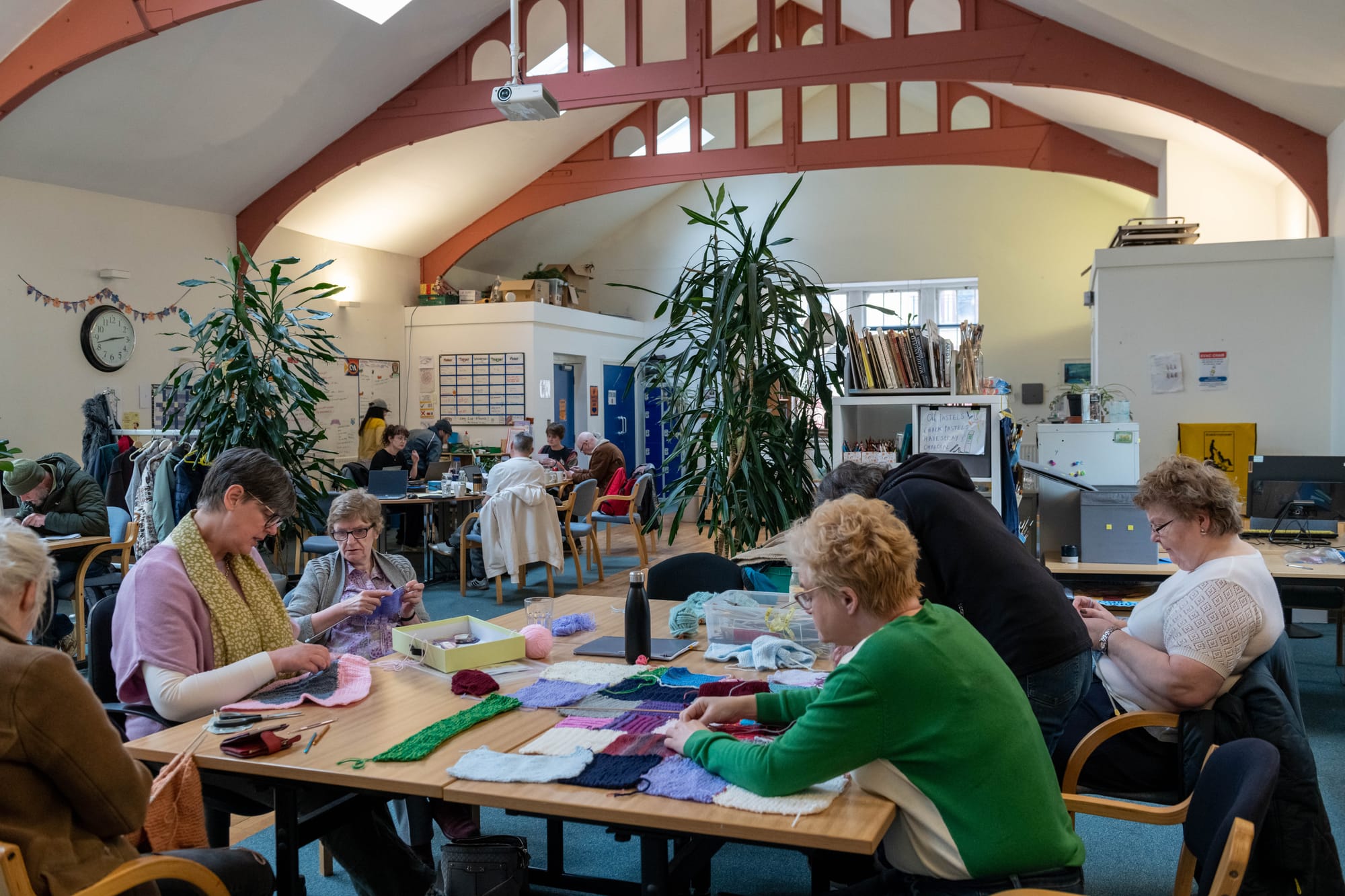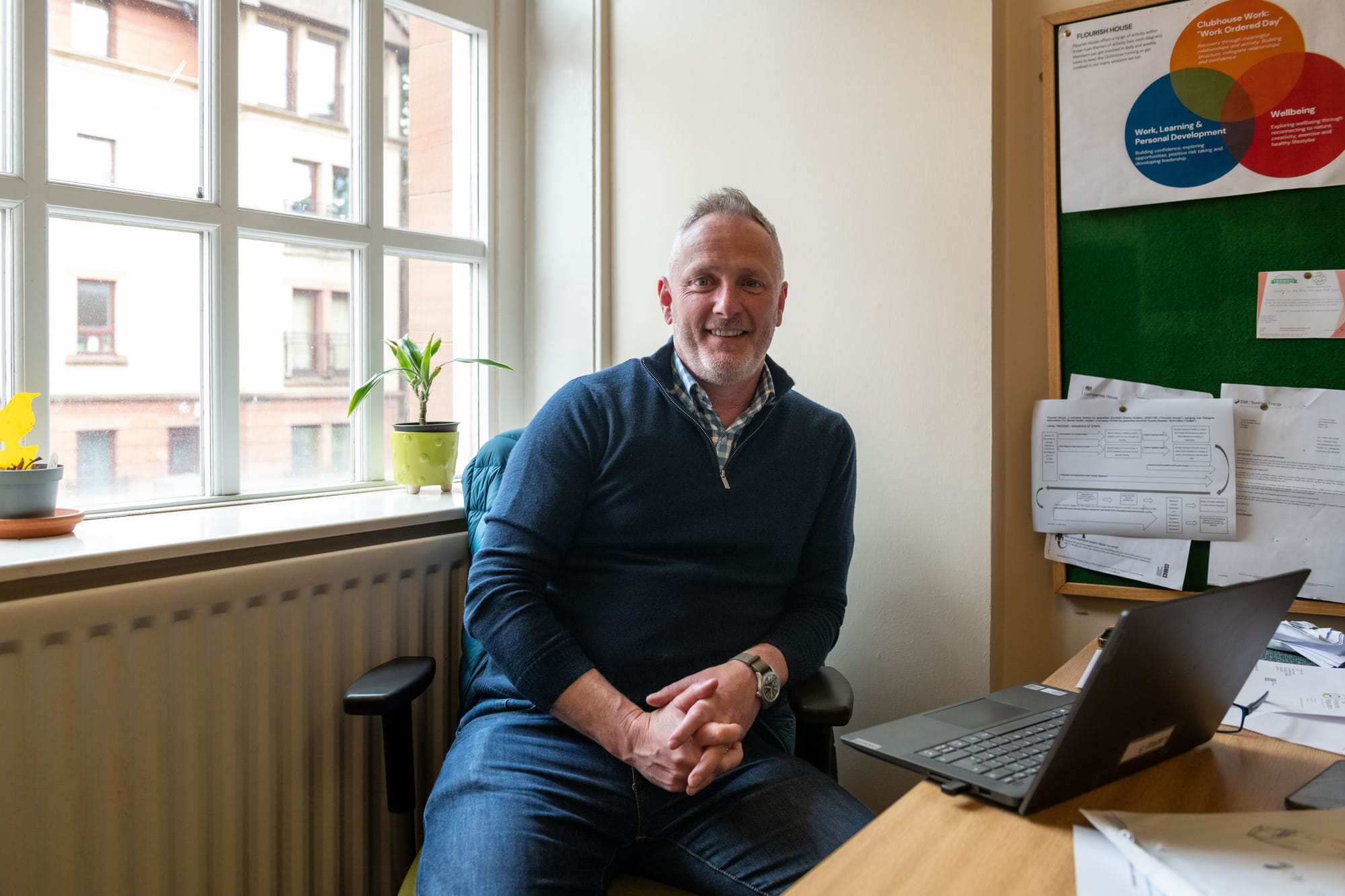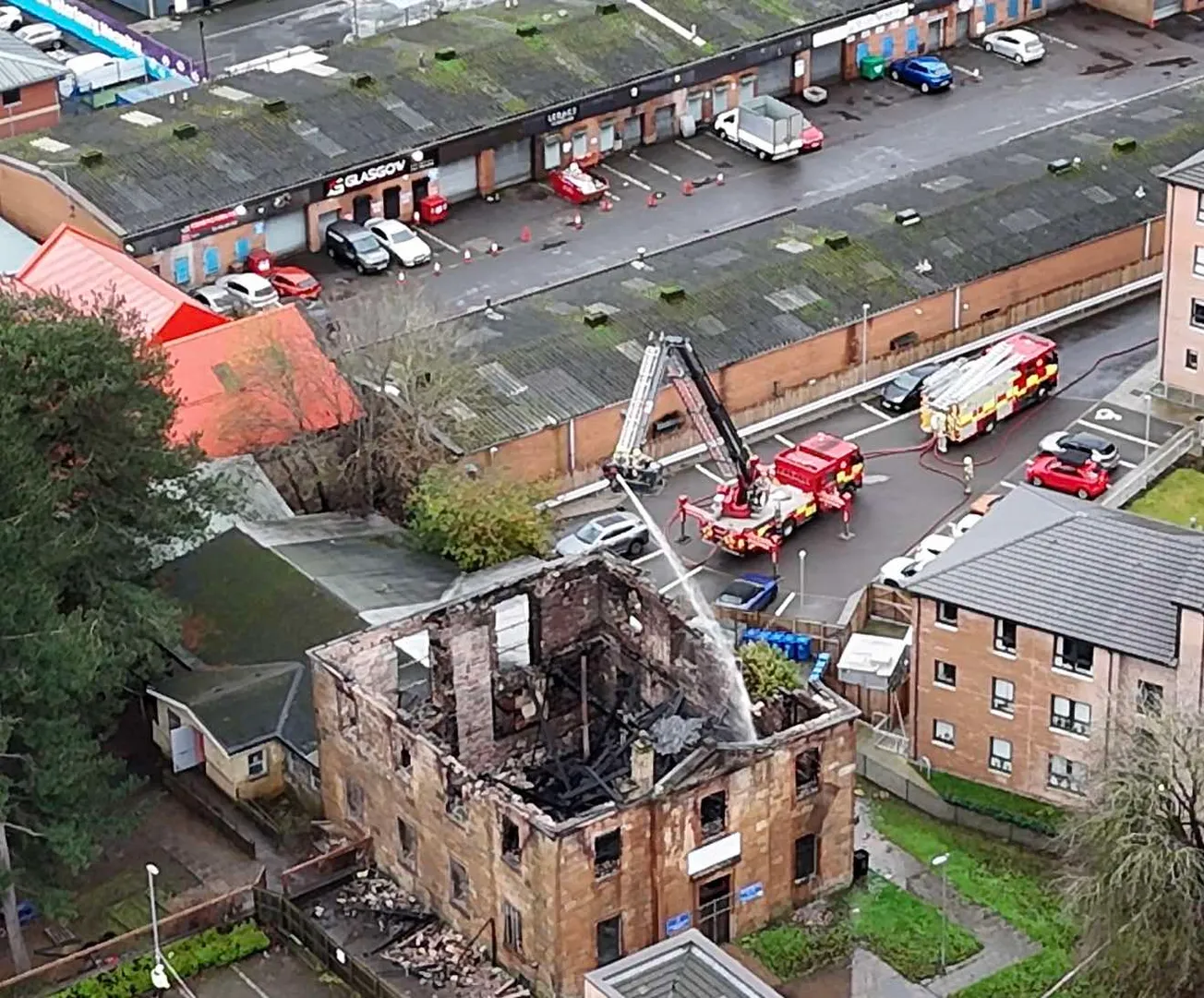One Thursday afternoon in March, on the top floor of an old church on Ashley Street in Woodlands, a motley crew gathered nervously in a tight circle, agendas in hand. Broad Glaswegian tones mingled with accented English as more than 40 people, ages ranging from 20s to 70s and from an array of different backgrounds and ethnicities, said their hellos and jostled for a seat.
It was a familiar setting for those in attendance — the weekly ‘house meeting’ of Flourish House, a unique mental health recovery centre in the city’s west end. Usually, members and staff alike might discuss upcoming trips or projects, opportunities in the community or jobs to be completed around the clubhouse. But that afternoon, the mood was more solemn.

Member Zoe, 38, doesn’t always make it to the Thursday house meetings — often she is climbing instead, a hobby she discovered through the Flourish House community; it has since become just as important for her mental health. That day, though, she sacrificed the climbing wall to make the journey from her home in Govan and take her seat at the meeting, the busiest she had ever seen. Members had been told there was an important topic to be discussed and that as many people as possible should attend.
“Then we all found out together that our funding had been completely pulled,” she tells me later in a small voice. “And there were a lot of very worried people that day — and still now.”
Since 1997, Flourish House has provided a space for people across Glasgow with long-term mental health difficulties to build confidence, form relationships and take part in meaningful work. Part of the international ‘clubhouse movement’, it’s the only organisation of its kind left in Scotland. Members are referred by mental health practitioners and join the clubhouse for life, meaning they can access the space any time during its opening hours for as long as they like.
While there, they volunteer time towards the running of the organisation, alongside staff who are considered their equals or “co-workers” — whether working on reception, updating the website, cooking meals, painting walls or tending to some of the many impressive plants adorning large, sun-soaked windowsills. Alongside their work, there are seemingly endless other opportunities, from day trips, cycling groups and knitting clubs to the production of a monthly radio show broadcast on community station Sunny Govan.
Flourish House started life as a Glasgow Association for Mental Health (GAMH) project before becoming independent in 2001. Almost thirty years on, it is one of a dwindling number of clubhouses across the UK. But about 18 months ago, John Linn, who had been CEO for almost 25 years, began to read the tea leaves.
Funding was becoming increasingly tight: a few years ago, it came from multiple sources, with the council’s Health and Social Care Partnership (HSCP) accounting for around 60-70%. In recent years, as other streams dried up, that figure drew closer to 90%. But at the same time, it was clear that cuts were coming — so in an attempt to mitigate their impacts, it was decided that Flourish House would merge once again with GAMH on 1 April this year.
“We reckoned that by going through the merger, and with some internal changes, we could deal with a cut of around 40%. It was a lot of work to get to that point, and I thought we’d been really smart to anticipate it,” Linn says with a wry smile.
But three weeks before the merger, Flourish House heard there wasn’t a cut to the budget from HSCP — there was just no budget at all. “That came as a huge shock. Had it not been for the merger, we’d now be looking at winding up the service,” Linn tells me. He is grateful to GAMH for going ahead at all, he says: taking on a project with no funding is a risk they hadn’t planned for, but their existing budget has given the clubhouse “a cushion we wouldn’t otherwise have”.
Linn is diplomatic; he says he understands the wider financial pressures and appreciates that HSCP funds lots of important work across the city, including other GAMH projects. Still, he says, the fact remains that some Flourish House members are now “terrified for what the future might hold.”

I visited Flourish House several times while reporting this story, welcomed on most of them by Anne-Marie on reception squeezing a boiled sweetie into my hand and one member or another striking up conversation in the foyer while I waited. From the outside, it is unassuming — the only red sandstone building in a street of blonde tenements, but otherwise nondescript. Downstairs, a cafe and kitchen area buzz with activity and chatter, a breeze wafting in from a recently renovated garden area. But more than one person I spoke to likened the building to a Tardis: upstairs, it unfurls into a large, open-plan space bathed in light, with a 12-foot vaulted ceiling and a spider plant on almost every surface.
In a small, freshly painted meeting room off the communal area, Zoe tells me she first moved to Glasgow in 2020 in an attempt to manage her mental health; a clean break from the triggers and habits that had become inseparable from the small English town she had grown up in. Upon her arrival, Glasgow’s NHS community health team suggested some projects she might benefit from, but they mostly reminded her of initiatives she’d tried in England that hadn’t really worked: the kind of thing where participants turn up to a room somewhere for a set period of time, over a set number of weeks, with the aim of getting a job at the end of it.
Glasgow deserves great journalism. You can help make it happen.
You'are halfway there,the rest of the story is behind this paywall. Join the Bell for full access to local news that matters, just £8.99 for the first 3 months.
SubscribeAlready have an account? Sign In
Comments
How to comment:
If you are already a member,
click here to sign in
and leave a comment.
If you aren't a member,
sign up here
to be able to leave a comment.
To add your photo, click here to create a profile on Gravatar.






